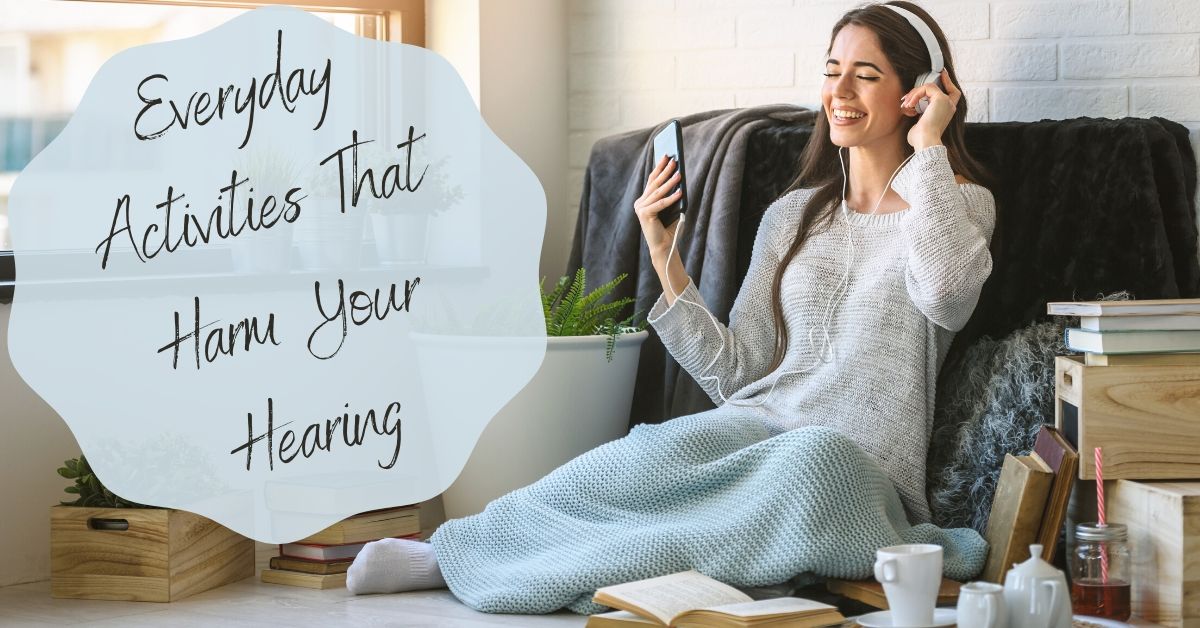
Everyday Activities That Harm Your Hearing
If there is anything we can say for sure about our modern society, it’s that it is LOUD. Street traffic, machines for mowing and cleaning, iPods, heaters, air conditioners, music festivals, you name it. Just about every time we leave the house, we are at risk for hearing loss. In fact, one out of five American teenagers has detectable hearing loss.
This is truly unfortunate, especially considering that sensorineural hearing loss, the kind associated with noise-induced hearing loss (NIHL) is incurable and permanent. Many people are taking risks with their hearing without knowing it, so let’s take a look at some everyday causes of hearing loss.
Lower Noise Levels Than You Think
Many people think hearing loss is caused only by extremely loud sounds, the kind that are painful to the ears when you hear them. We conjure images of electric guitars, drum sets, construction sites and large V-twin motorcycles. But the fact is that sounds don’t have to be anywhere near that loud to cause hearing loss
Typical Sound Levels of Everyday Sounds
Sound levels are measured in units called “decibels.” When we talk about ambient sounds (that is, sounds in the air), we use the A-weighted decibel scale (dBA). The Center for Hearing and Communication offers a comprehensive list of common environmental sounds and their typical sound level in dBA. It’s a good idea to familiarize yourself with some of the common sound levels you might be exposed to so you have a sense of when it’s important to protect your ears. Here are a few examples:
- 40: Quiet library sounds
- 50: Refrigerator
- 60: Electric toothbrush
- 60: Normal conversation
- 65-95: Lawnmower
- 70: Washing machine
- 70-95: Garbage disposal
- 75-85: Flush toilet
- 80: Alarm clock
- 85: Heavy traffic, noisy restaurant, handsaw
- 85: Inside of a commercial aircraft at cruising altitude
- 90: Subway train
- 90: Tractor
- 95: Electric drill
- 95-110: Motorcycle
- 100: Factory machinery
- 105: Snowblower
- 105: Inside of a commercial aircraft during takeoff and landing
- 110: Car horn
- 110: Shouting in ear
- 110: Leaf blower
- 110-120: Rock concert
- 120: Ambulance siren
Doing the Math
The dBA of any given sound depends on your proximity to it; the dBA provided above assumes a typical distance from the sound source. The dBA of any given sound decreases by 6 with every doubling of your distance from it.
Now, what levels put us at risk for hearing loss? Here, also, there is a little math involved. Hearing loss can occur over a prolonged period at as low as 70 dBA, but a more common metric is that hearing loss occurs after about 8 hours of exposure to sounds at 85 dBA. For every increase of 3 dBA, the time it takes for hearing loss to occur is cut in half. This means by the time we get to the level of sound that a leaf blower puts out (110 dBA), it takes less than two minutes of exposure to cause hearing loss. And at 120 dBA (the level of an ambulance siren), hearing loss can occur immediately. So go ahead and plug your ears when the ambulance comes by!
Keep in mind that, at a rock concert, we’re spending the whole length of time of the concert listening to sound at a level that can cause hearing loss after only a second. Many music enthusiasts will attend multiple music festivals in a summer, or one or two smaller concerts in a week. Without hearing protection, hearing loss is guaranteed.
It Is Important to Protect Your Ears
Hearing loss is not just a minor inconvenience. Hearing loss makes conversation more exhausting and difficult, and can lead to social isolation, as well as a host of other negative health outcomes. Most people will need hearing aids at some point in their lives, but the kind of damage that unprotected exposure to loud sounds can do over a lifetime can make it difficult or impossible for hearing aids to help.
As we’re seeing more and more hearing loss, growing at an alarming rate, don’t be a statistic. Protect your ears when you’re going to be around loud sound, or medium-level sound for extended periods. If you need help determining whether the places you spend your time are safe, download an SPL (Sound Pressure Level) meter app for your phone and check for yourself. If the meter reads over 70 dBA in a place you spend long hours, start taking steps to protect your hearing while you’re there. Always carry a set of earplugs in case you end up in a noisy environment while you’re out, and if you suspect you might already have NIHL, get your hearing tested with our team as soon as possible!
